How many times have you rolled out of bed feeling like you’re made of rusted metal? That initial stiffness, the groans as you bend over to put on your socks, the feeling that your body is a few decades older than you are.
How you start your morning sets the tone for how your body feels all day.
Too often, we jump from 8 hours of stillness in bed straight into the chaos of the day—sitting in traffic, hunching over a desk, and then maybe pushing ourselves in a workout. We expect our bodies to go from 0 to 100 without a proper warm-up, and then we wonder why we feel tight, achy, and prone to injury.
What if you could change that narrative in just 15 minutes?
This isn’t about a punishing workout. It’s about a gentle, deliberate conversation with your body. This physiotherapist-designed morning mobility routine is your key to lubricating stiff joints, waking up your muscles, and preparing your body for whatever the day throws at it. Ditch the stiffness and start your day feeling fluid, energized, and resilient.
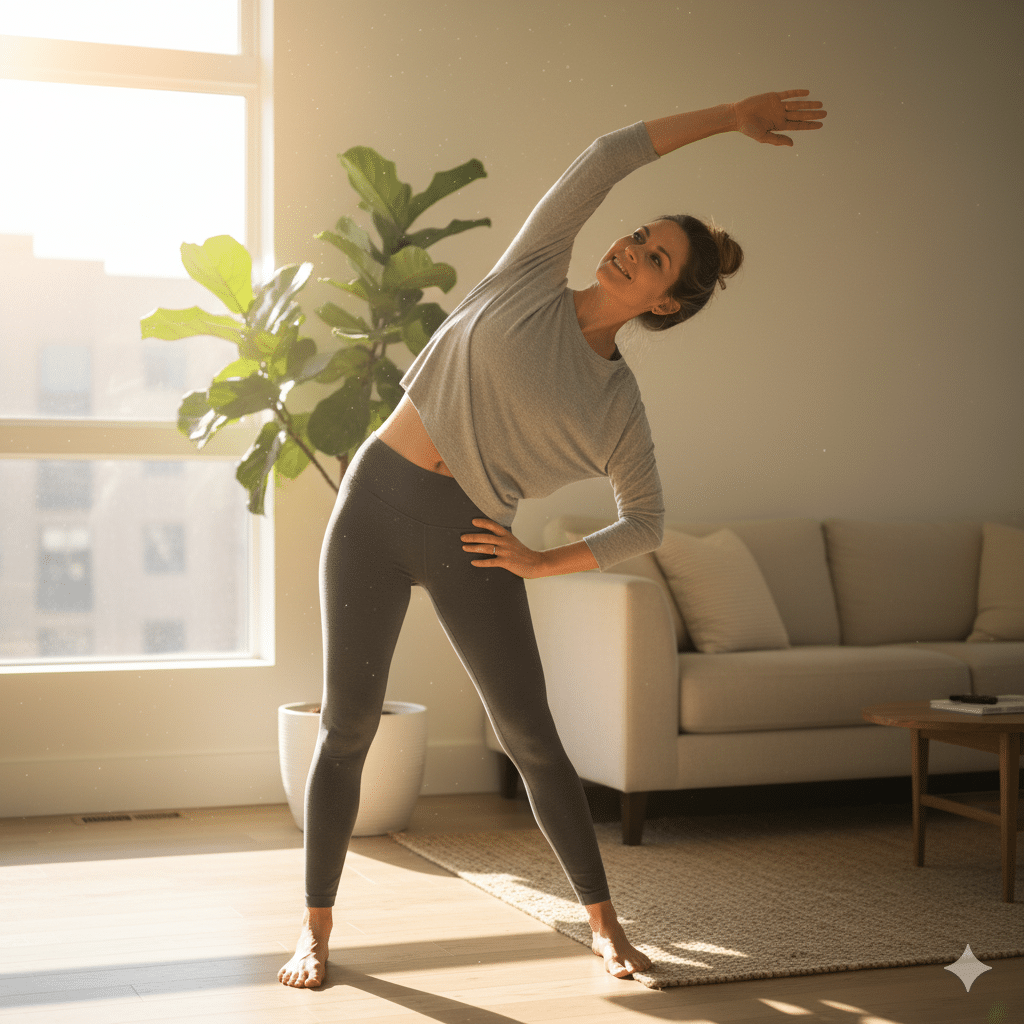
Why a Morning Mobility Routine is a Game-Changer
You might think stretching is just for athletes, but mobility is a fundamental pillar of health for everyone. Think of it as daily maintenance for your body’s moving parts. Here’s the simple science behind why it works so well, especially in the morning.
- It Lubricates Your Joints: Your joints are filled with synovial fluid, a substance that acts like engine oil, reducing friction and nourishing your cartilage. During sleep, this fluid can become thick and stagnant. Gentle, controlled movement circulates this fluid, lubricating the joint surfaces and making movement feel smoother and more effortless.
- It Activates Your Muscles: The routine gently “wakes up” your stabilizing muscles, particularly those around your spine, hips, and shoulders. This improves your posture and ensures these muscles are ready to support you throughout the day, rather than putting excess strain on your joints and ligaments.
- It Boosts Blood Flow: Movement increases circulation, delivering a fresh supply of oxygen and nutrients to your muscles, tendons, and ligaments. This helps flush out metabolic waste that can build up overnight and contributes to that feeling of energy and alertness.
- It Enhances Body Awareness: By moving slowly and deliberately, you improve your proprioception—your brain’s awareness of your body’s position in space. This mind-body connection is crucial for better coordination and reducing the risk of accidental injuries.
The 15-Minute Full-Body Mobility Routine
Perform these movements slowly and with control. The goal is to feel a gentle stretch and activation, not pain. Breathe deeply and consistently throughout.
1. Cat-Cow (2 Minutes)
Focus: Gently waking up and mobilizing your entire spine. Why it helps: After being in one position all night, your spine needs a gentle wake-up call. This movement encourages each vertebra to move independently, relieving stiffness from your neck down to your tailbone.
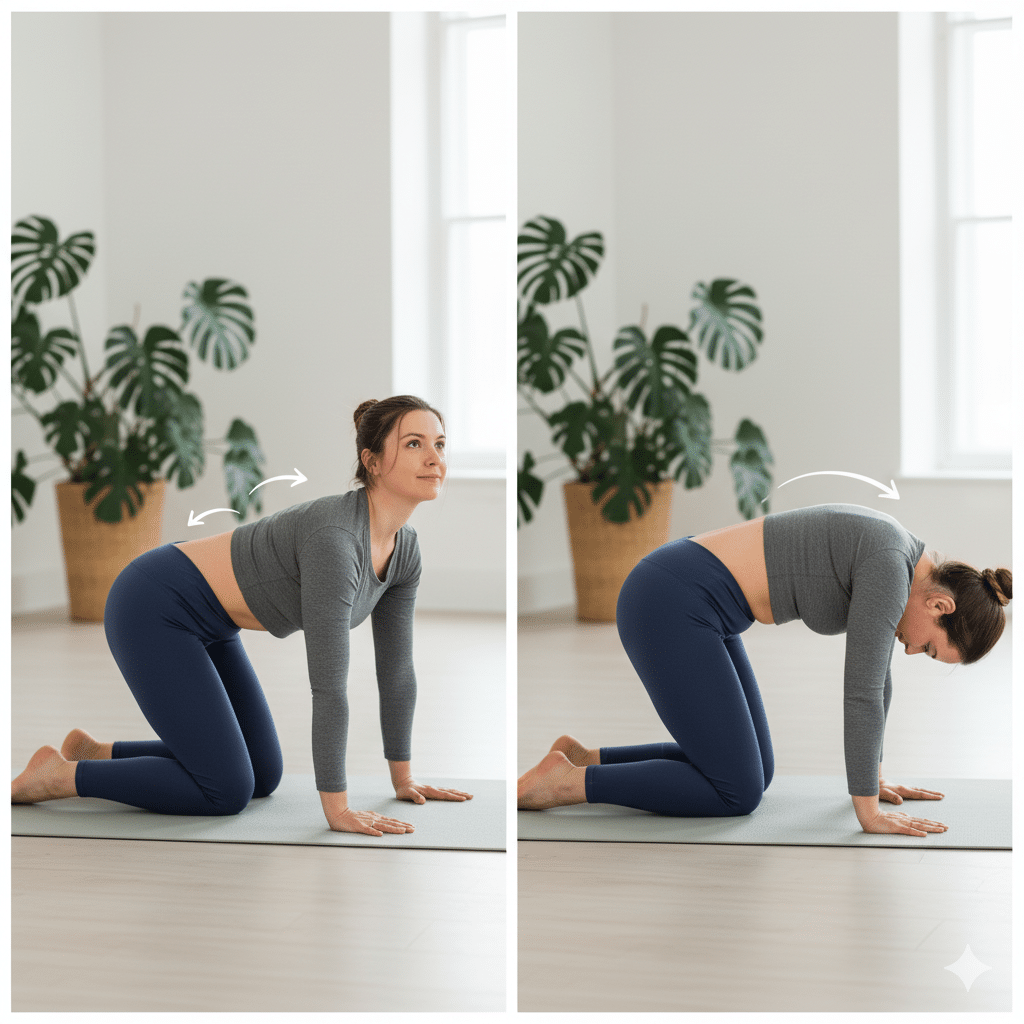
- Step 1: Start on your hands and knees in a tabletop position. Your wrists should be under your shoulders, and your knees under your hips.
- Step 2 (Cow): Inhale as you drop your belly towards the floor. Lift your chest and tailbone, looking slightly forward. Create a gentle curve in your spine.
- Step 3 (Cat): Exhale as you press the floor away, rounding your spine towards the ceiling. Tuck your chin to your chest and your tailbone under.
- Step 4: Flow smoothly between these two positions for 10-12 repetitions.
Physio Tip: Imagine your spine is a wave. Try to make the movement fluid and sequential, rather than just hinging from your lower back.
2. Thoracic Spine Windmills (3 Minutes)
Focus: Unlocking your mid-back (thoracic spine). Why it helps: Your thoracic spine gets incredibly stiff from hunching over phones and computers. Improving its ability to rotate takes immense pressure off your lower back and neck.
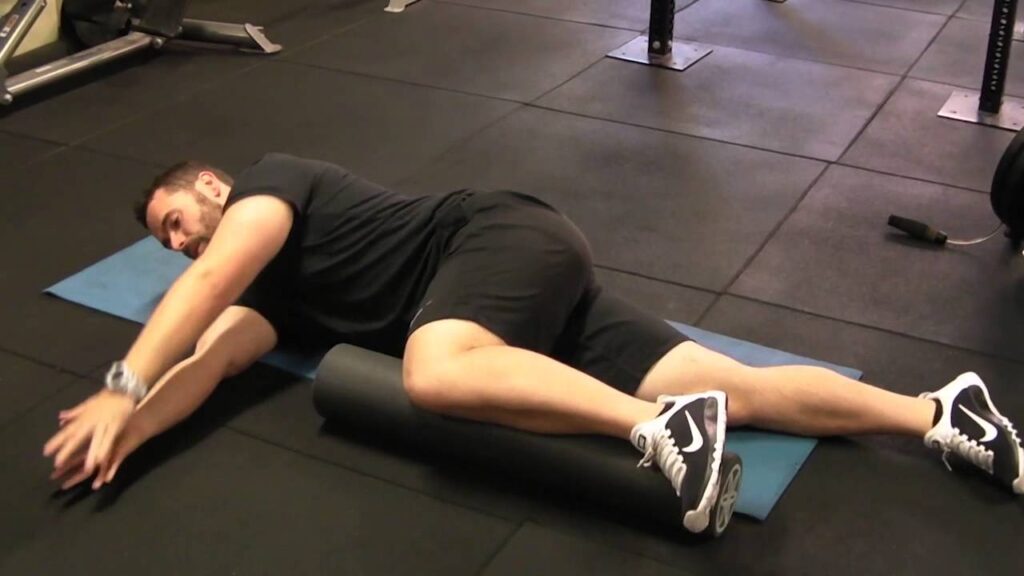
- Step 1: Lie on your side with your knees and hips bent to 90 degrees. You can place a pillow under your head for comfort.
- Step 2: Extend both arms straight out in front of you at shoulder height, with your palms together.
- Step 3: Keeping your knees together and on the floor, slowly lift your top arm up and over your body in a large arc, as if you’re opening a book.
- Step 4: Follow your hand with your eyes and head. The goal is to try and touch your top shoulder blade to the floor on the other side.
- Step 5: Hold the stretch for a breath, then slowly return to the starting position.
- Step 6: Perform 8-10 repetitions on one side, then switch.
Physio Tip: Only go as far as you can without your knees lifting off the floor. The movement should come from your mid-back, not by twisting your pelvis.
3. Hip Circles (3 Minutes)
Focus: Mobilizing the hip joint in its socket. Why it helps: Sitting shortens and tightens the muscles around your hips. This movement takes the hip through its full range of motion, improving flexibility and reducing that “stuck” feeling.
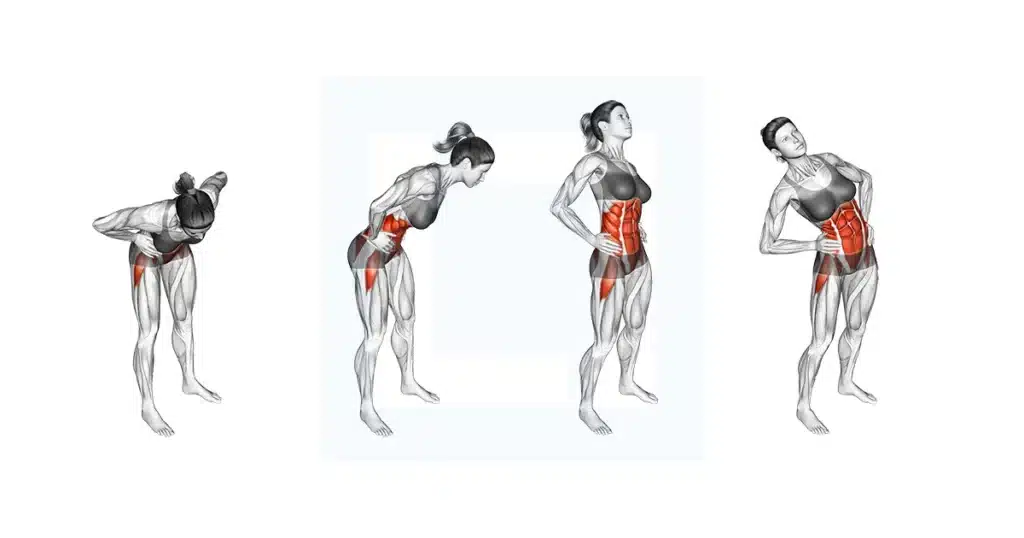
- Step 1: Start on your hands and knees (tabletop position) again. Keep your core engaged to prevent your back from sagging.
- Step 2: Slowly lift one knee off the floor. Begin to draw a large, controlled circle with your knee.
- Step 3: Bring the knee forward towards your chest, out to the side, back towards your glutes, and then down again.
- Step 4: Keep your pelvis and lower back as still as possible. The movement should be isolated to the hip joint.
- Step 5: Perform 5-8 circles in one direction, then reverse the direction for another 5-8 circles. Switch legs.
Physio Tip: Imagine you have a glass of water on your lower back that you don’t want to spill. This will help you keep your core stable.
4. The World’s Greatest Stretch (WGS) (4 Minutes)
Focus: A dynamic, full-body stretch for your hips, hamstrings, groin, and thoracic spine. Why it helps: It’s called the “World’s Greatest” for a reason! This is the most efficient mobility exercise you can do, hitting multiple key areas in one fluid movement.
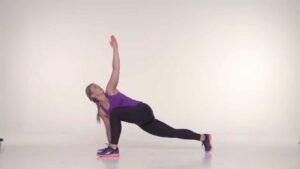
- Step 1: Start in a plank position.
- Step 2: Step your right foot forward to the outside of your right hand, sinking into a deep lunge. Keep your back leg straight and engaged.
- Step 3: Drop your right elbow down towards the inside of your right foot. You’ll feel a deep stretch in your right groin and left hip flexor.
- Step 4: Place your right hand back on the floor, then rotate your chest to the right, reaching your right arm up towards the ceiling. Follow your hand with your eyes.
- Step 5: Bring your hand back down, step your right foot back to the plank position, and repeat on the left side.
- Step 6: Alternate sides for 5-6 repetitions on each side.
5. Shoulder Pass-Throughs (3 Minutes)
Focus: Opening the chest and improving shoulder mobility. Why it helps: This is the perfect antidote to “desk posture,” where our shoulders round forward. It improves your range of motion and can help prevent shoulder impingement issues.
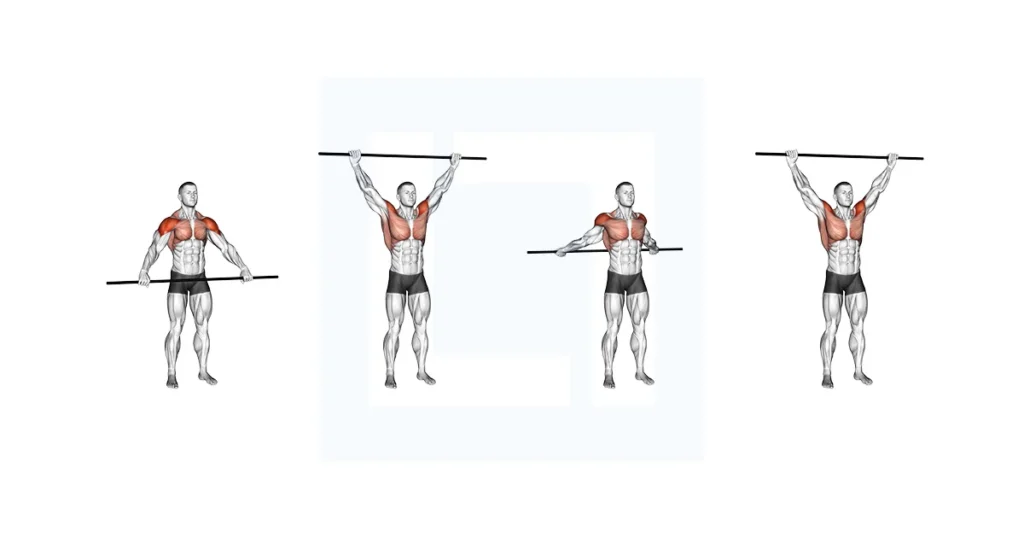
- Step 1: Stand with your feet shoulder-width apart. Hold a broomstick, resistance band, or even a rolled-up towel with a wide, overhand grip.
- Step 2: Keeping your arms straight (but not locked), slowly lift the object up in front of you and over your head.
- Step 3: Continue the arc, bringing it all the way behind you until it touches your lower back or glutes.
- Step 4: Reverse the motion, bringing it back over your head to the starting position.
- Step 5: Perform 10-15 slow and controlled repetitions.
Physio Tip: If you can’t complete the movement without bending your elbows, widen your grip. If it feels too easy, narrow your grip slightly. Keep your ribcage down and avoid arching your back.
A Final Word on Consistency
The magic of this routine isn’t in its intensity, but in its consistency. Five days a week of 15 minutes will do more for your long-term health than one brutal hour on a Sunday. Listen to your body, breathe, and enjoy the process of starting your day with intention.
You’re not just fighting stiffness; you’re investing in a future with fewer aches, better movement, and a reduced risk of injury.
Ready to Take the Next Step in Your Health Journey?
Love how this feels? Imagine a routine designed specifically for your body, your goals, and your lifestyle. Preventative care is the most powerful tool you have for long-term health. Ask us about our preventative care screenings and personalized exercise programs at Physiogain.com. Let’s build a stronger, more resilient you.
What’s your biggest challenge with morning stiffness? Is it your back, hips, or shoulders? Let us know in the comments below!